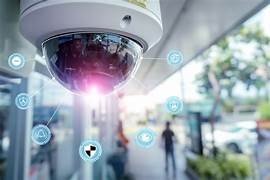Surveillance Technology and the Right to Personal Privacy
Introduction
The rapid advancement of surveillance technology has transformed how governments, corporations, and individuals collect and use personal data. While these technologies enhance security and efficiency, they also raise serious concerns about privacy rights. The debate over surveillance technology and personal privacy is crucial in defining the balance between security and individual freedoms. This article explores the implications of surveillance, its benefits, and the challenges it poses to personal privacy.
The Evolution of Surveillance Technology
Surveillance has existed for centuries, but the digital age has accelerated its expansion. Modern surveillance tools include:
- CCTV cameras: Ubiquitous in urban areas for crime prevention.
- Facial recognition technology: Used for security purposes but criticized for inaccuracies and biases.
- Internet monitoring: Governments and corporations track online behavior for security and marketing.
- GPS tracking: Essential for navigation but also used for location surveillance.
- Biometric data collection: Involves fingerprints, iris scans, and DNA for authentication purposes.
The integration of artificial intelligence (AI) in surveillance further complicates the issue, as algorithms can analyze vast amounts of data, raising concerns about misuse and discrimination.
The Benefits of Surveillance Technology
Surveillance technology offers numerous advantages, including:
- Crime Prevention and National Security: Cameras and tracking systems deter criminal activity and assist law enforcement in identifying threats.
- Public Safety: Surveillance helps manage large crowds, monitor traffic, and respond to emergencies.
- Fraud Prevention: Businesses use surveillance to detect fraud and protect financial assets.
- Improved Services: AI-driven data analysis enhances customer experiences and personalizes digital services.
Privacy Concerns and Ethical Issues
Despite its benefits, surveillance technology presents significant threats to personal privacy:
- Mass Surveillance and Government Overreach: Excessive data collection by governments can lead to an erosion of civil liberties and suppression of dissent.
- Data Breaches and Cybersecurity Risks: Storing vast amounts of personal data makes systems vulnerable to hacking and unauthorized access.
- Lack of Transparency and Consent: Many individuals are unaware of how their data is collected and used, leading to concerns about informed consent.
- Discrimination and Bias: AI-powered surveillance can reinforce biases, disproportionately targeting marginalized communities.
Legal and Policy Frameworks
Governments worldwide have introduced laws to regulate surveillance, such as:
- The General Data Protection Regulation (GDPR): Enforces strict data protection rules in the European Union.
- The USA PATRIOT Act: Expands surveillance capabilities in the name of national security.
- The California Consumer Privacy Act (CCPA): Gives consumers control over their data.
However, these regulations often struggle to keep pace with technological advancements, leading to legal gray areas and ethical dilemmas.
Balancing Security and Privacy
A balanced approach to surveillance and privacy requires:
- Stronger Data Protection Laws: Governments should enact comprehensive privacy regulations.
- Increased Transparency: Organizations must disclose data collection practices.
- Public Awareness and Digital Literacy: Educating individuals about data privacy rights.
- Ethical AI Development: Ensuring surveillance technology is fair and unbiased.
Conclusion
Surveillance technology continues to evolve, presenting both opportunities and challenges. While it enhances security and convenience, its impact on personal privacy cannot be ignored. Striking a balance between surveillance and privacy is essential to protect individual rights while maintaining public safety. Thoughtful regulation, ethical technology use, and increased transparency will be key in shaping the future of surveillance in a democratic society.


